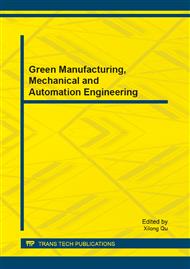p.611
p.617
p.621
p.626
p.631
p.636
p.642
p.647
p.652
Research on Optimal Control and Simulation for Active Suspension Systems
Abstract:
Vehicles with active suspension systems become more ride comfort and maneuverable stability, many types of active suspensions have been applied to passenger vehicles, but one of the shortcomings of an active susupension system is that the additional control power consumption is needed. The core issues of designing an active suspension system are to minimiaze vibration magnitute and control energy comsuption of the active suspension system. A new mathematic model for an active suspension system is established based on vehicle dynamics and modern control theory. An optimal control law is constructed through solving the Riccati equation, and then the transfer function is deduced to describe the relationship between the vetical velosity of the road roughness and the output of suspension system. Three typical parameters of vehicle ride comfort are researched, such as vertical acceleration of vehicle body, dynamic deflection of suspension system and dynamic deformation of tires. A case of a quarter vehicle model is studied by simulation to show that the proposed method of modeling and designing optimal controller are suitable to develop active suspension systems.
Info:
Periodical:
Pages:
631-635
Citation:
Online since:
July 2013
Authors:
Keywords:
Price:
Сopyright:
© 2013 Trans Tech Publications Ltd. All Rights Reserved
Share:
Citation:


